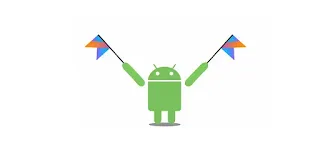42. Kotlin Fundamentals for Android - System broadcasts
🌐 Kotlin Fundamentals for Android: System Broadcasts
Welcome, Android developers! Today we'll dive deep into system broadcasts in Kotlin, exploring how to efficiently handle and utilize system-wide event communication in your Android applications.
📡 Understanding System Broadcasts
System broadcasts are a crucial mechanism in Android for receiving system-level events and notifications. They allow applications to respond to various system-wide changes and events without constant polling.
🔍 Key Broadcast Components
- BroadcastReceiver class
- Intent filtering
- Context-based registration
- Dynamic and static registration methods
💻 Basic Broadcast Receiver Implementation
class SystemBroadcastReceiver : BroadcastReceiver() {
override fun onReceive(context: Context, intent: Intent) {
when (intent.action) {
Intent.ACTION_BATTERY_LOW -> handleBatteryLow()
Intent.ACTION_SCREEN_OFF -> handleScreenOff()
Intent.ACTION_CONNECTIVITY_CHANGE -> handleNetworkChange()
}
}
private fun handleBatteryLow() {
// Handle low battery scenario
Log.d("BroadcastReceiver", "Battery is low!")
}
}
🔧 Registration Methods
Dynamic Registration
class MainActivity : AppCompatActivity() {
private lateinit var broadcastReceiver: SystemBroadcastReceiver
override fun onCreate(savedInstanceState: Bundle?) {
super.onCreate(savedInstanceState)
broadcastReceiver = SystemBroadcastReceiver()
val filter = IntentFilter().apply {
addAction(Intent.ACTION_BATTERY_LOW)
addAction(Intent.ACTION_SCREEN_OFF)
}
registerReceiver(broadcastReceiver, filter)
}
override fun onDestroy() {
super.onDestroy()
unregisterReceiver(broadcastReceiver)
}
}
Static Registration (Manifest)
<receiver android:name=".SystemBroadcastReceiver">
<intent-filter>
<action android:name="android.intent.action.BATTERY_LOW" />
<action android:name="android.intent.action.SCREEN_OFF" />
</intent-filter>
</receiver>
🚨 Modern Approach: Jetpack Compose
@Composable
fun SystemBroadcastHandler() {
val context = LocalContext.current
val coroutineScope = rememberCoroutineScope()
DisposableEffect(context) {
val receiver = SystemBroadcastReceiver()
val filter = IntentFilter().apply {
addAction(Intent.ACTION_BATTERY_LOW)
}
context.registerReceiver(receiver, filter)
onDispose {
context.unregisterReceiver(receiver)
}
}
}
🎯 Practical Challenges
1. Create a battery level monitoring broadcast receiver
2. Implement a network connectivity change handler
3. Build a custom broadcast sender
4. Design a location-based broadcast mechanism
5. Develop an airplane mode change detector
Pro Tip: Always unregister your broadcast receivers to prevent memory leaks and unexpected behavior.
🔒 Best Practices
- Use context-aware registration
- Handle potential null intents
- Keep broadcast receivers lightweight
- Consider using modern alternatives like WorkManager
🏁 Conclusion
System broadcasts remain a powerful tool in Android development. By understanding their mechanics and applying best practices, you can create more responsive and efficient applications.
#Kotlin
#AndroidDev
#SystemBroadcasts
#JetpackCompose
📱 Stay Updated with Android Tips!
Join our Telegram channel for exclusive content, useful tips, and the latest Android updates!
👉 Join Our Telegram ChannelGet daily updates and be part of our growing Android community!


Comments
Post a Comment